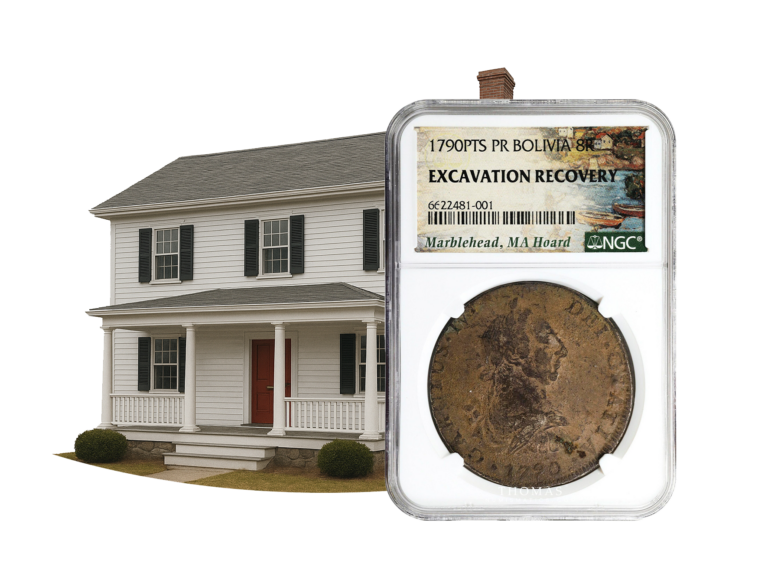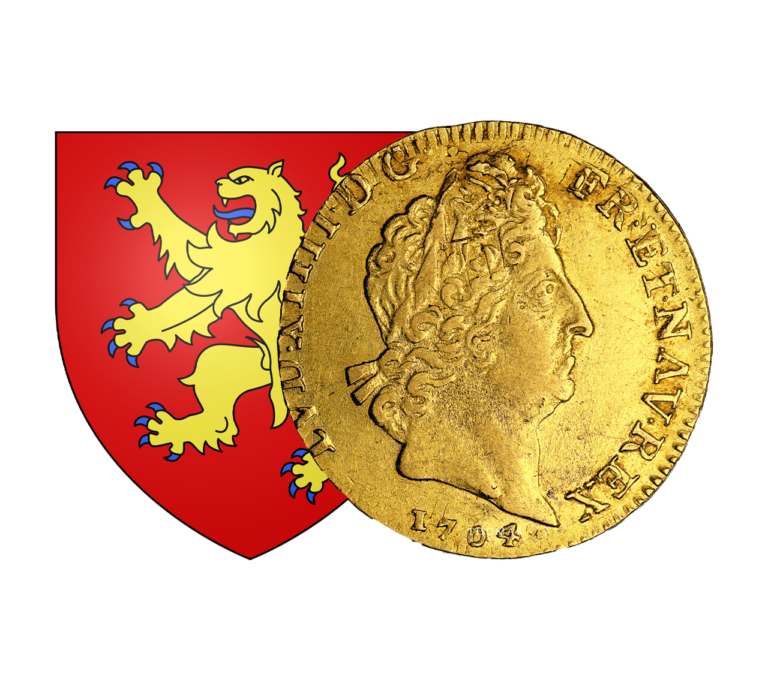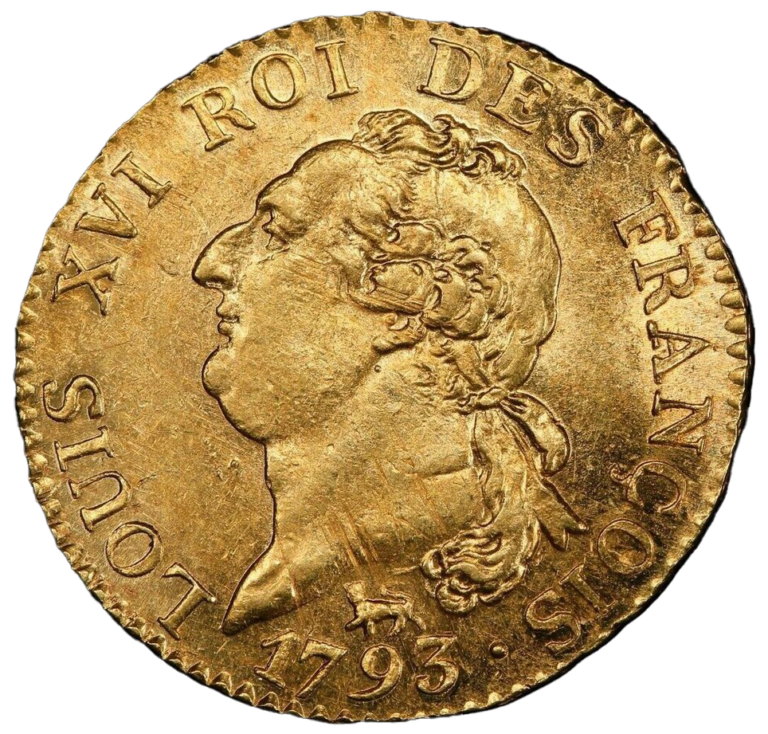
Discover all the news and articles from TNUMIS Magazine exclusively
Nuestra Señora de Atocha treasure
In 1621, the Nuestra Señora de Atocha, an imposing Spanish galleon, made its first voyage to Spain during which it broke its mast. Was this announcing a bad omen? Indeed, in 1622, only one year after its launch, the galleon did not resist a violent storm. It sank to the bottom of the ocean and took with it a precious cargo that would become one of the greatest numismatic treasures of all time, discovered only 300 years later.
Nuestra Señora de Atocha, a military escort
The Nuestra Señora de Atocha was a ship built in Havana in 1620 for the Spanish Empire. Typical of the great galleons of the 17th century, it belonged to the Fleet of the Indies, the navy designed to escort a hundred merchant ships and their cargoes between the Americas and Spain.
The Nuestra Señora de Atocha was heavily armed with twenty bronze cannons. It was 34 meters long, 10 meters wide, and could move 550 tons. A crew of 180 sailors and 82 infantrymen was needed for its operation.
At the time of its sinking, it was carrying a considerable cargo: the inventory showed 1,038 silver ingots, 180,000 pesos in silver coins (reales), 582 copper ingots, 125 gold ingots and disks of Colombian gold, 350 bales of indigo, 525 tobacco stingers, as well as 600 kilos of silverware.
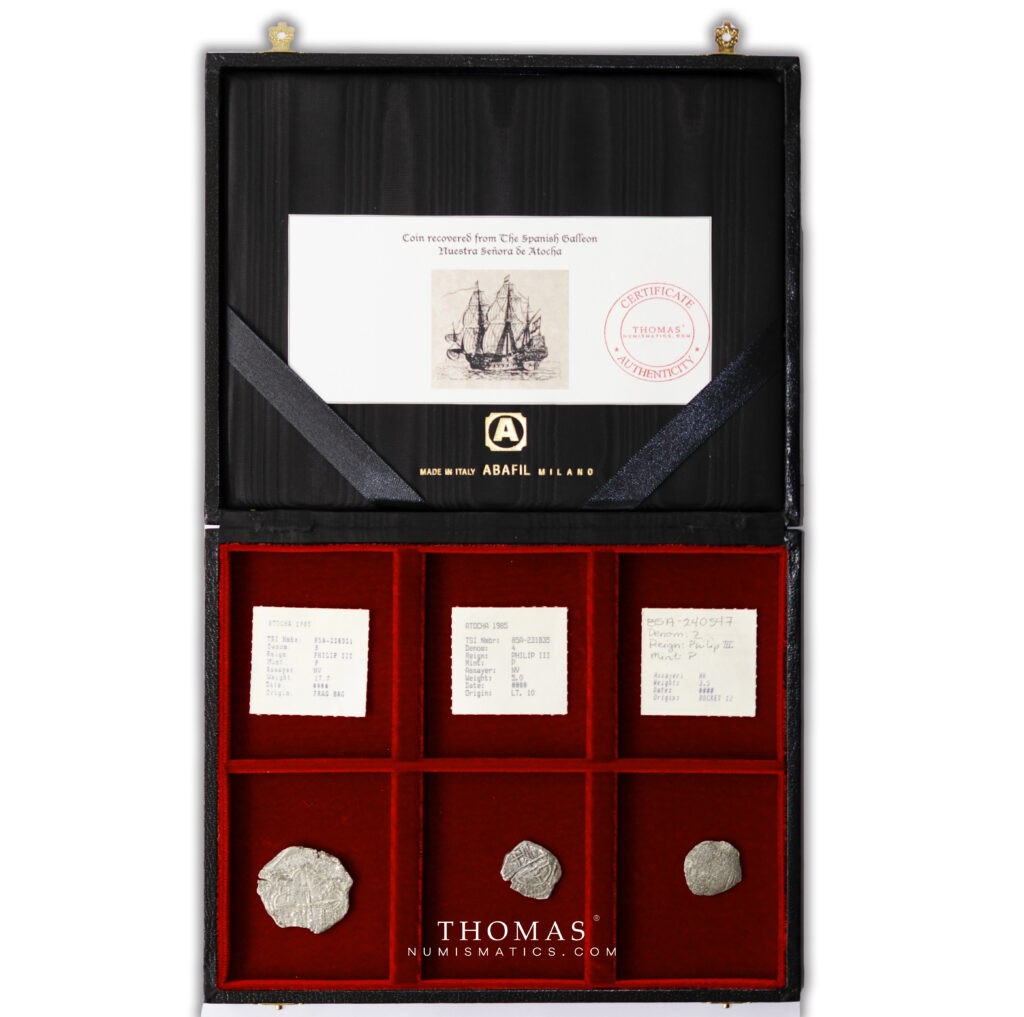
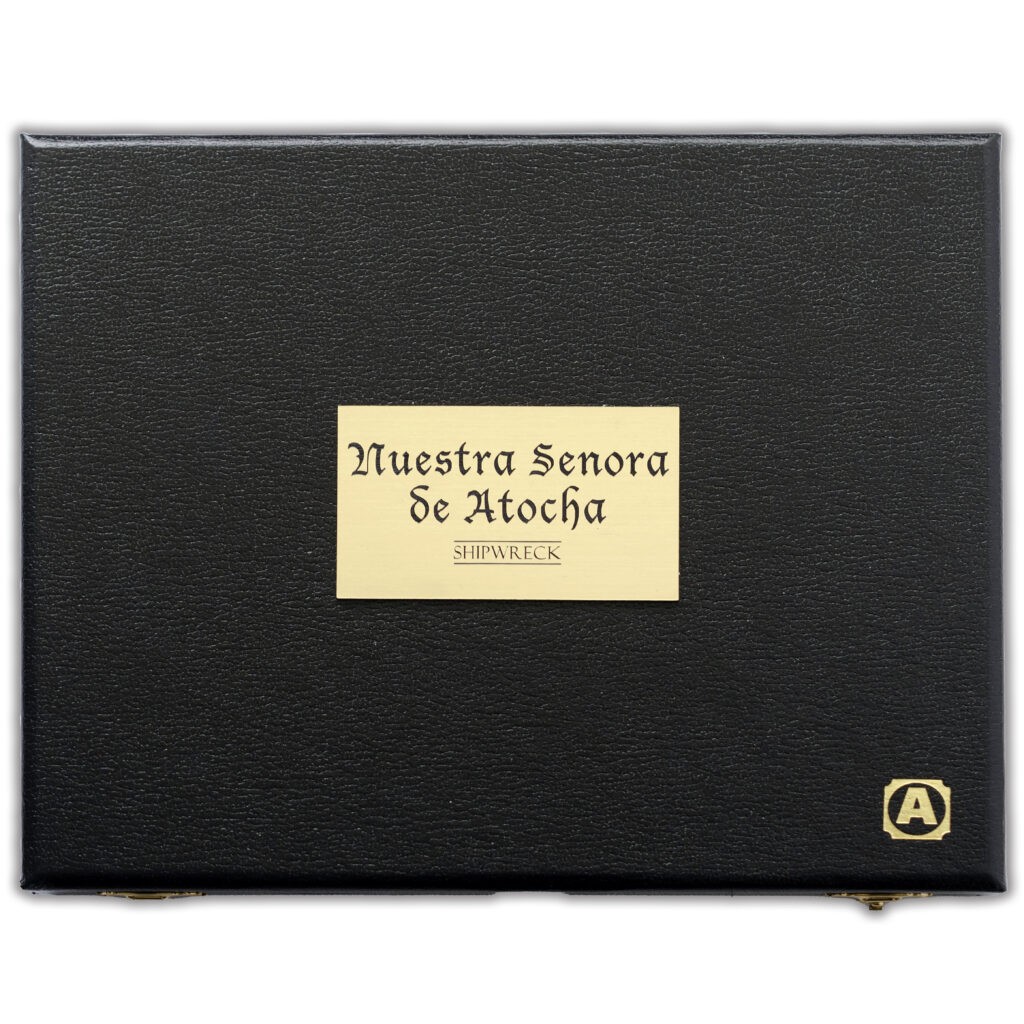
The sinking of the Señora de Atocha
September 6, 1622
What exactly happened? The Señora de Atocha left Portobelo on July 22, with a cargo hold already full of Peruvian treasures. It joined the rest of the Indian Fleet in Cartagena, Colombia, where it completed its cargo. Delayed by various events, the departure of the Spanish East India Fleet took place later than expected, when the hurricane season was already well underway. The fleet, made up of 28 ships in single file, first called at Havana, before casting off for Spain on the morning of September 5.
The procession headed north towards the Florida Keys archipelago. The next day, September 6, 1622, a strong wind pushed the convoy back into the Gulf of Mexico. The Atocha kept watch and was the rear guard. It did not have time to avoid the storm and was hit by the hurricane, as were eight other ships, including the Santa Margarita and the Nuestra Señora del Rosario, which were swept away from Key West. The Atocha broke up on a reef and sank very quickly.
The contemporary research of the shipwreck
The next day, a passing boat found five men desperately clinging to the mast still sticking out of the water. They were the only survivors of the entire crew.
Marked by the mast, the site of the wreck was easy to locate and a salvage company sent by Spain, quickly arrived on the spot from Havana. However, the divers did not manage to go down deep and did not have the necessary tools to drill the hull. The Spaniards had to go back to Havana to look for more adequate equipment. In the meantime, another hurricane hit the region and completed the destruction of the wreck, knocking down the remaining mast and scattering the debris of the ship. The authorities were unable to find the remains of the Atocha.
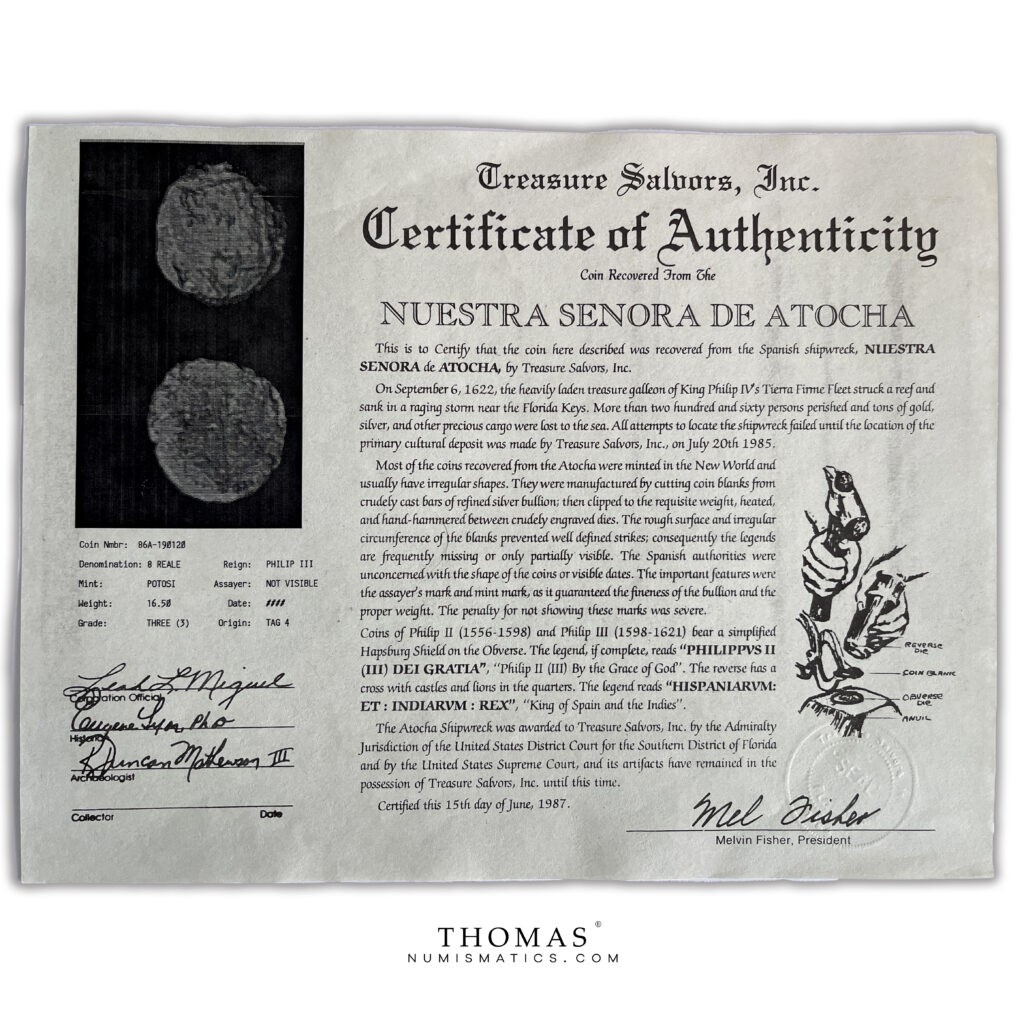
The treasure of the Nuestra Señora de Atocha
The diver Mel Fisher
The treasure of the Nuestra Senora de Atocha finally reappeared from the water more than 350 years later, thanks to a man who devoted part of his life to finding the wreck: Mel Fisher.
Born in 1922 in Indiana, Mel Fisher was a true adventurer. As a child, he already had a thirst for discovery and spent his time swimming in lakes. He also made objects such as a diving helmet or a raft to descend the Mississippi. Not surprisingly, he studied engineering when he was drafted to France at the beginning of World War II. Upon his return, he moved to Florida and opened a dive store.
In the 1950s, the gold rush opened up opportunities and gave new ideas to Mel Fisher. He was fascinated by the discovery of gold and treasures in general. One day, a meeting with some treasure-hunting divers became decisive. They had just found some coins in a wreck off the coast of Miami. Mel was won over. In 1962, he founded the Treasure Rescuers with five other divers, and began expeditions in the waters of the Pacific.
It was during this period that he invented the mail box. A huge blower that allows clearing the sand of the depths to make appear the objects strewn in the depths. This machine quickly gave him results.
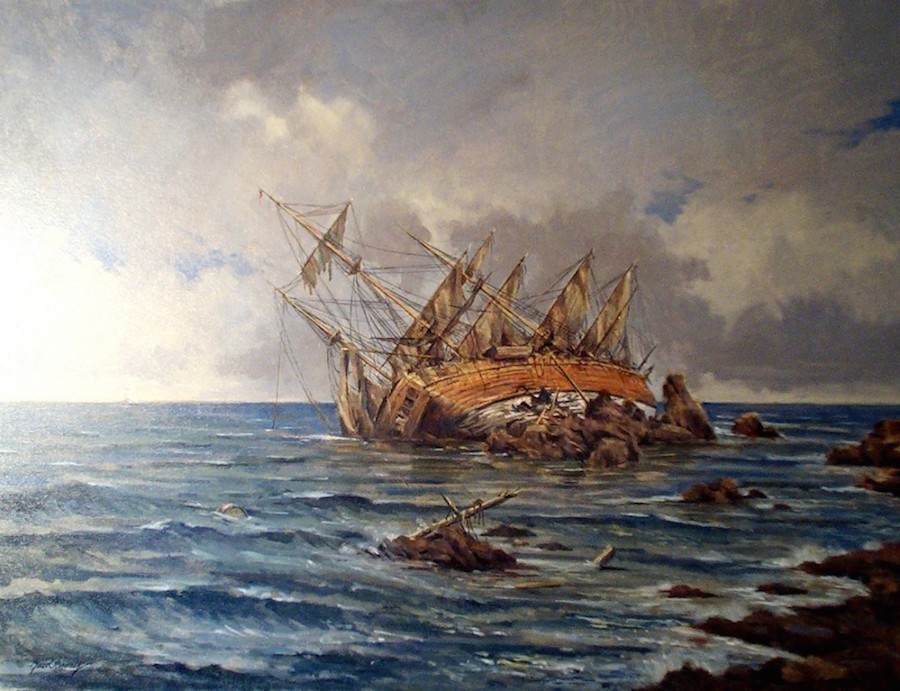
Discovering the treasure of the Atocha
Confident, Mel Fisher decided to concentrate on the search for the Nuestra Señora de Atocha. He then concentrated on a very large area of the Keys archipelago. He leased a maritime concession to the State of Florida, which planned to leave 75% of the value of the finds to the inventors and to win only the remaining 25%.
Fisher was actually looking in the wrong place until he benefited from the research of the historian Eugene Lyon. Lyon was able to determine a more precise location of the shipwreck, thanks to the archives of Seville.
Five years later, Fisher found the first object attesting to Atocha’s origin. But the treasure was scattered over more than 18 kilometers. He found pieces here and there, but could not find the wreck.
The search for the Atocha’s treasure made a major breakthrough in 1973, when three numbered silver ingots were found, and then in July 1975, when Mel’s son, Dirk Fisher, unearthed the ship’s five bronze cannons. But the euphoria quickly gave way to horror. A week after the discovery, Dirk and his wife died in an accident with their own boat.
In mourning, the Fisher family continues the search for justice for Dirk. In 1980, a part of the Santa Margarita was found with its cargo. The Atocha was clearly not far. One would have to wait five more years before Mel’s second son, Kane, finally discovered the main site of the Atocha’s sinking, in July 1985!
In total, 47 tons of silver were brought to the surface, as well as the mythical eight reales coins, minted in Potosí and Mexico City. The coins of the Atocha were later categorized in 5 grades, according to their state of conservation due to the long stay in the salt water.
A long legal process followed. Given the size of the loot, Florida demanded that the loot be returned to the state. The Supreme Court finally decided: the Fishers obtained exclusive rights to the treasure.
To this day, the wreck remains the largest treasure ever found at sea, estimated at 450 million dollars. The treasure of Nuestra Senora de Atocha never ceases to amaze the numismatic world. In fact, part of the treasure of the famous Nuestra Senora de Atocha was auctioned off in 2015 to mark the 30th anniversary of its discovery. Other pieces from Mel Fisher’s collection are on display in American museums.
You’ll regularly find pieces from this shipwreck for sale in our online store.
Sources : Le figaro Slate Hypothèse Le blog des chercheurs de trésors Le blog Les Etats-Unis d’Amérique Wikipedia
